Searching for the right bait to use fishing can be a real hair-puller! That’s why I decided to develop this guide for the best worms for fishing.
Knowing which worm species work best for different fish can significantly improve your angling experience with the different types of worms available.
Among the various types of worms, red wigglers, European and Canadian nightcrawlers are commonly used as fishing bait. Red wigglers and European nightcrawlers are smaller worms, making them an excellent choice for catching smaller fish such as sea trout and yellow perch.
In contrast, the larger Canadian nightcrawlers are suitable for targeting bigger fish in murky waters or during ice fishing. Another type of worm, the African nightcrawler, is known for its large size and adaptability to cold temperatures, making it a versatile and effective bait.
When selecting the right worm for your fishing adventure, consider the target fish species, water conditions, and time of year. Ensuring you have the best worm for each fishing situation can make your next trip more enjoyable and successful.
Best Worms for Fishing
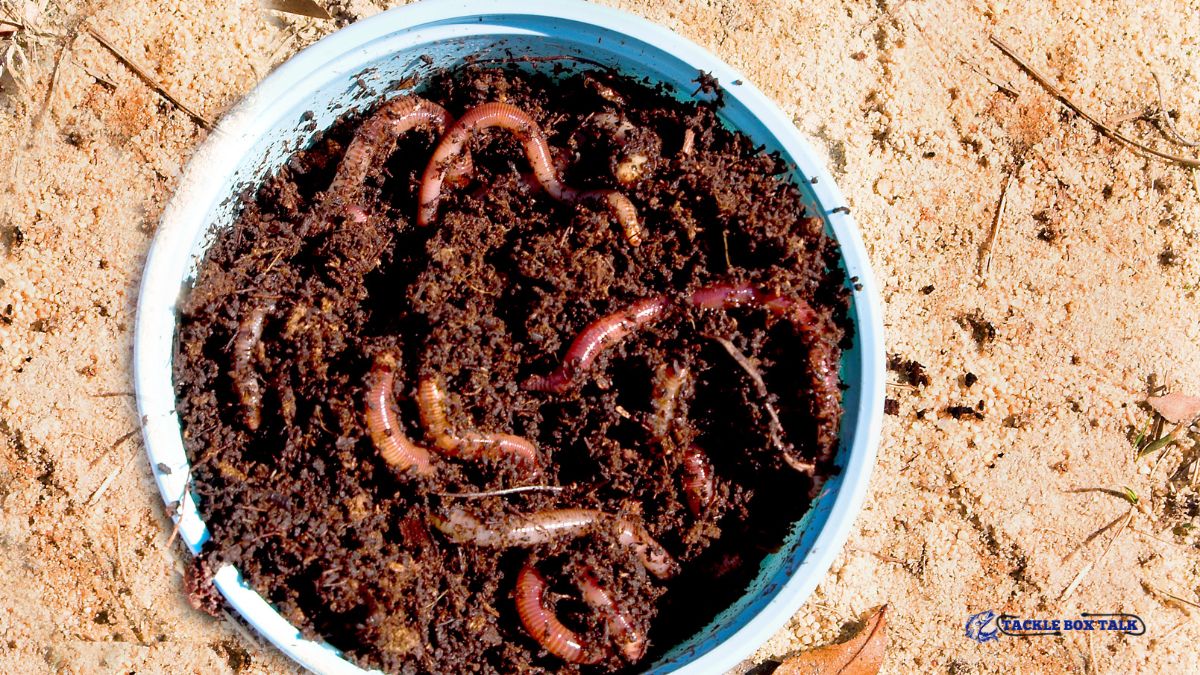
Nightcrawlers
Canadian Nightcrawlers and European Nightcrawlers are among the best worms for fishing. These large-sized worms are excellent bait for many fish species, including largemouth bass, yellow perch, and sea trout.
Due to their large size, these night crawlers can be cut into smaller pieces to catch smaller fish or used whole for bigger fish.
They can tolerate colder temperatures, making them ideal for ice fishing. These live worms are available at most bait shops and can even be found at tackle shops that offer free shipping.
African Nightcrawlers are another type gaining popularity due to their massive size and ability to live in warmer water.
These big worms are ideal for fishing in murky waters and are a favorite amongst largemouth bass.
Red Wigglers
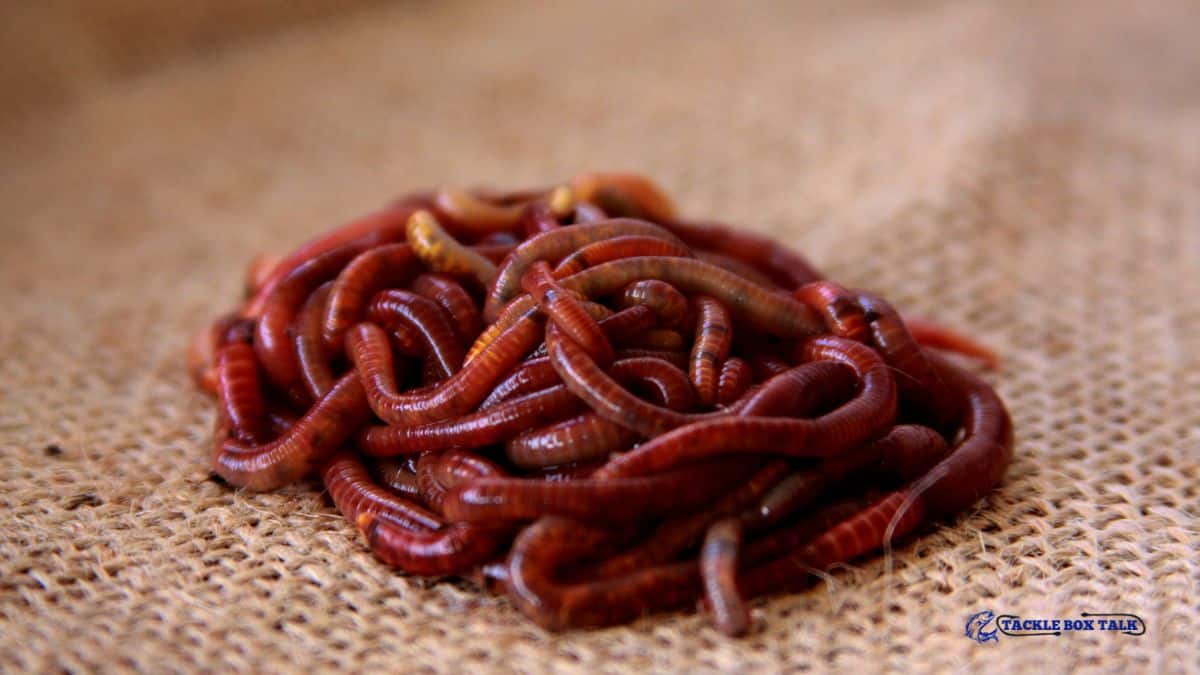
Red Wigglers, or Eisenia Hortensis, are smaller worms that are a great bait option for targeting smaller fish species such as bluegills and crappie.
They also attract larger fish, such as black drum and yellowtail, making them an excellent choice for freshwater and saltwater fishing.
Their red color and smaller size make them an easy target for fish in the water column.
These worms can be found in many bait shops and worm farms or even grown in your worm bin, making them an accessible and affordable option for your next fishing trip.
Due to their small size, they can be used with soft plastic worms or other types of live bait like fiddler crabs, blue crabs, and clam worms to vary your presentation on the fishing hook.
Mealworms
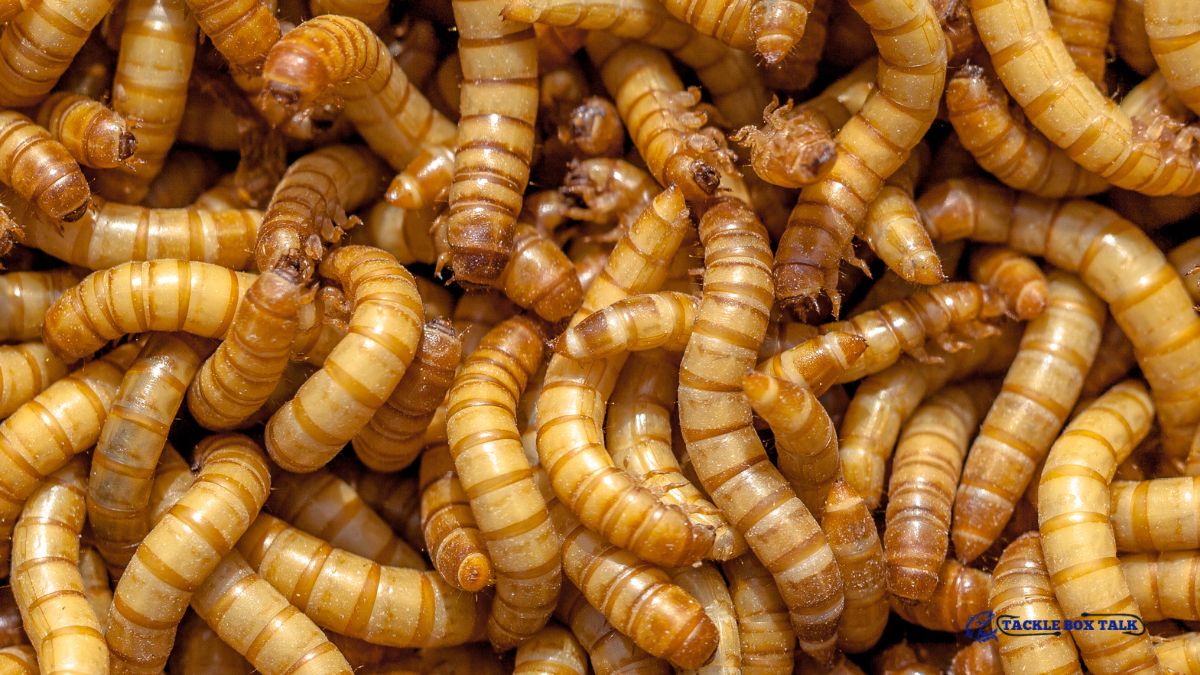
Mealworms, also known as Tiger Worms or Wax Worms, are another popular bait option for fishing. These worms are smaller than nightcrawlers, perfect for targeting fish like panfish and trout. They also make excellent bait for ice fishing, as they can remain active in cold water.
Mealworms are available at most bait and tackle shops, often with free shipping for bulk orders. They can also be found in many worm farms or cultivated at home.
When using mealworms for bait, choosing the right size for the fish species you are targeting is essential, as smaller fish may have a hard time taking in larger worms, while bigger fish may not show interest in smaller worms.
Fishing Guide: Best Bait for BrownTrout
Determining the Best Worm for Your Fishing Needs
When it comes to worm fishing, selecting the best worm for your needs is crucial. Consider your chosen target species, water temperature, and time of day. This guide will help you make an informed decision.
Target Species
Different fish species have various preferences when it comes to bait. Here is a table featuring popular fish species and their preferred worm types.
| Fish Species | Preferred Worms |
| Largemouth Bass | Canadian Nightcrawlers, European Night Crawlers, Red Wigglers |
| Yellow Perch | Wax Worms, Red Worms |
| Sea Trout | Fiddler Crabs, Clam Worms |
| Small Fish Species | Red Worms, Smaller Worms |
| Black Drum | Grunt Worms, Blue Crabs |
Keep in mind that these are general recommendations, and experimenting with different worm types can be beneficial. For example, African Nightcrawlers and Eisenia Hortensis (European Night Crawler) can be excellent bait for various fish species.
Water Temperature
Cold temperatures can affect the activity level of live worms, making them less effective as bait. For ice fishing or early spring outings, consider using artificial worms or stick baits to adjust for these conditions.
Conversely, live worms such as red wigglers or Canadian nightcrawlers in warmer water can be an excellent choice, as they thrive in warmer environments.
Time of Day
The time of day can influence the type of worm that will be most effective. For example, night crawlers are more active during the early morning and late evening hours, so concentrating on these times is a good idea.
During the day, smaller worms like red worms or wax worms have an easier target for fish and try using neko rigs or a wacky rig for added success.
Remember that you can purchase live worms, such as red wigglers, at bait shops or tackle shops, or even consider starting your own worm bin or worm farm.
This not only ensures you have a fresh supply of the best bait but also allows you to save money and control the quality of your bait.
Fishing Guide: Top 10 Bass Fishing Lures
How to Properly Rig Fishing Worms

Fishing with worms is a time-tested and highly effective method for catching various fish species. Choosing the best worms and rigging them correctly can make all the difference when it comes to worm fishing.
Some best fishing worms include red wigglers, European nightcrawlers, and Canadian and African nightcrawlers. This article will discuss three popular rigs for worm fishing: Drop Shot Rigs, Carolina Rigs, and Wacky Rigging.
Drop Shot Rigs
A drop shot rig is an excellent bait setup for targeting smaller fish and fish species that feed near the bottom of the water column, such as yellow perch, sea trout, and bass. To create a drop shot rig:
- Thread a hook onto your line and tie a Palomar knot. Leave an extra 6-12 inches of line to attach a weight at the end.
- Use a smaller hook for smaller fish, and for larger fish, use a bigger hook. Live worms like red wigglers or European nightcrawlers make excellent bait.
- Attach a weight, such as a drop shot weight or a split shot, at the end of the line below the hook. This keeps the worm off the bottom, making it an easy target for fish.
Try using wax worms on a drop shot rig for better cold water or ice fishing results.
Carolina Rigs
The Carolina rig is an excellent choice for anglers targeting bigger fish in deeper, murky water. Largemouth bass, black drum, and other large fish find worms on Carolina rigs irresistible. To create a Carolina rig:
- Slide a bullet weight onto your mainline, followed by a bead and a swivel.
- Attach a 12-18-inch leader to the swivel and tie a suitable hook at the end of the leader.
- Red worms, and Canadian and African nightcrawlers make great bait for Carolina rigs. Hook the worm through the head end for a natural presentation.
When fishing with larger worms, cutting them into smaller pieces may be necessary to accommodate the hook size and make the bait more manageable for fish.
Wacky Rigging
Wacky rigging is a popular method for bass fishing, especially when using artificial worms like stick baits. However, live worms such as red worms and European nightcrawlers can also be used effectively with a wacky rig. To create a wacky rig:
- Thread a hook through the middle of the worm, leaving equal portions of the worm on either side of the hook.
- Cast the rig out and allow it to sink slowly. The worm will wriggle enticingly to attract fish.
- For a slightly different presentation, try using a wacky worm o-ring to hold the worm in place on the hook instead of threading it directly.
Remember, worm farms and tackle shops offer a variety of live worms suitable for these rigs. For your next fishing trip, consider using these time-tested rigs and the best types of worms to increase your chances of success on the water.
Fishing Guide: Best Bait for Northern Pike Ice Fishing
Storing and Preserving Your Fishing Worms
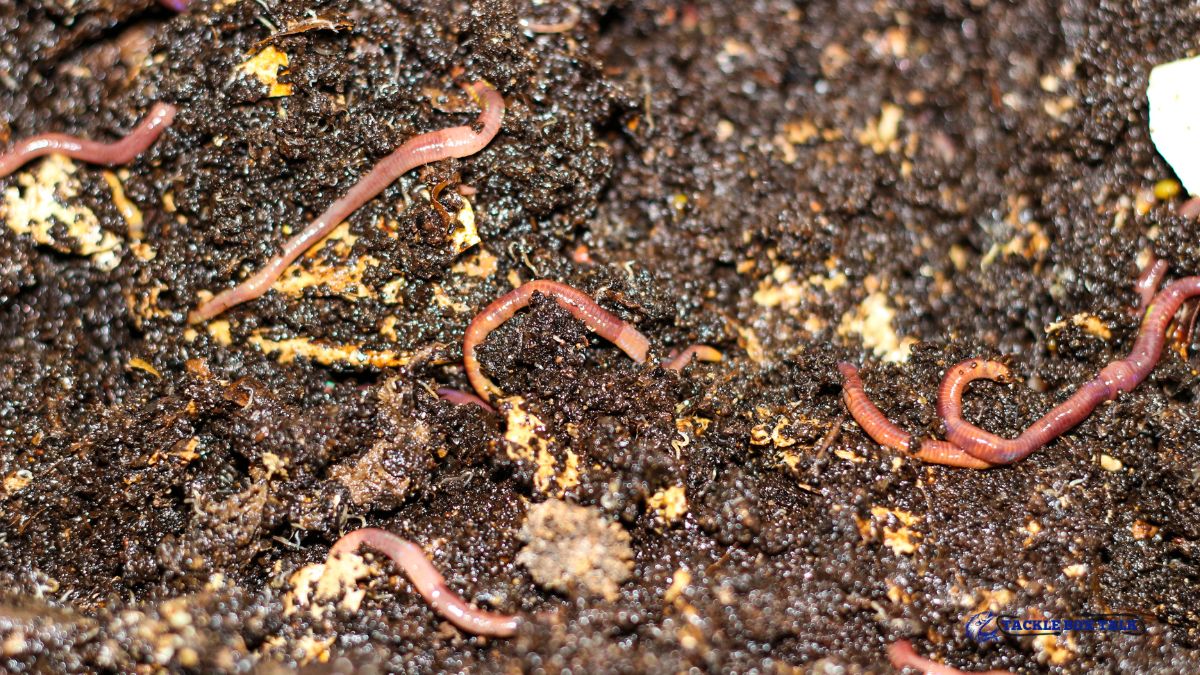
Fishing with live worms, such as red wigglers or nightcrawlers, has long been an excellent bait for catching various fish species.
Proper storage and care can significantly extend the worms’ lifespan, ensuring you have the best bait for your next fishing trip. This section will discuss keeping your fishing worms alive and the proper storage methods.
Keeping Them Alive
To maintain your worms’ vitality, storing them in the right environment is crucial. Worms like red wigglers, and European and Canadian nightcrawlers should be kept at cool temperatures, preferably between 40°F to 60°F.
Avoid exposing the worms to excessive heat or direct sunlight, which can cause stress, resulting in dead worms.
A worm bin provides a suitable environment for storing live worms, with the added benefit of producing composting worms for your garden.
Fill the container with organic materials like aged compost, shredded newspaper, and leaf litter, ensuring a damp yet breathable environment for the worms. Regularly check the bin for moisture, as worms breathe through their skin and require constant moisture to survive.
Proper Storage
The best bait shops supply a range of live worms like red worms, small fish, wax worms, and even tiger worms.
However, you may want to store your live worms longer. Transferring larger worms like European or African nightcrawlers to a spacious container with cold temperatures helps keep them healthy.
For ice fishing or cold-weather excursions, it’s essential to maintain your worms’ quality. You can store your worms in a container with clean, fresh water to avoid dead worms.
When bait fishing in murky water or targeting smaller fish, it’s best to cut a larger worm, like a Canadian nightcrawler, into smaller pieces to last longer.
Besides worm bins, tackle shops may have worm containers allowing air circulation while maintaining moisture levels.
Don’t overcrowd the container, as worms require oxygen to survive. If you notice any dead worms in the container, remove them immediately to prevent the spread of bacteria that may be harmful to the other worms.
By properly storing and preserving your fishing worms, you’ll have great bait for fish species like sea trout, yellow perch, largemouth bass, and other favorites in fresh and saltwater fishing.
Conclusion – Best Worms For Fishing
When choosing the best worms for fishing, anglers have several options. Red wigglers, European nightcrawlers, and Canadian nightcrawlers are among the top choices, each with advantages for specific fishing situations.
Understanding your fishing needs and experimenting with different worm types will ensure a successful and enjoyable fishing experience. So, on your next fishing trip, be sure to bring along a variety of worms or visit bait shops for the best fishing worms and gear.
Frequently Asked Questions
What is the most effective worm for bass fishing?
The most effective worm for bass fishing usually mimics the prey found in their local habitat. However, some of the best worms for this type of fishing include Canadian nightcrawlers and largemouth bass’s excellent choice: European nightcrawlers. Both worms are of large size and provide great bait for attracting bass. In murky water or during ice fishing, a brightly-colored worm like the red worm or red wiggler may be more effective.
Which fish species prefer worms as bait?
Many fish species are attracted to live worms because they resemble their natural food. Some common fish that prefer worms as bait include bass, trout, perch, yellowtail, and bluegill. Sea trout, smaller fish like panfish, and even bigger fish like black drum and redfish can be targeted with worm bait. Worms can be excellent bait for both freshwater and saltwater fishing.
What is the difference between red worms and nightcrawlers for fishing?
Red worms, also known as red wigglers, are smaller worms that often live in compost piles and can be found at worm farms. They are best for targeting smaller fish in freshwater environments. Nightcrawlers, including Canadian and European, tend to be more robust, making them excellent bait for bigger fish. African nightcrawlers can withstand cold temperatures, making them suitable for ice fishing.
How do live and fake fishing worms compare in effectiveness?
Live worms can be more effective than artificial worms since they release attractive scents and natural vibrations that attract fish. Live worms also have a more realistic appearance and movement. However, soft plastic worms and other artificial worm baits can also be effective and may last longer on the hook. While live fishing bait might attract diverse fish species, artificial worms can be customized in size, color, and scent to target specific fish.
What are the best types of worms for fishing various species?
The best types of worms for fishing of various species depend on factors such as the target fish’s size, preferred bait, and habitat. For example, red worms and European nightcrawlers are excellent for bass and trout, while Canadian and African nightcrawlers may be more suitable for cold-weather fishing. Smaller worms like wax and caster maggots work well for panfish, while larger worm varieties are better for targeting bigger fish.
Where can I purchase high-quality worms for fishing?
High-quality worms for fishing can be found at various locations, including bait shops, tackle shops, and online retailers. Some anglers even prefer to raise their worms in a worm bin or purchase them from worm farms. Be sure to look for live worms rather than dead worms, as live bait is generally more attractive to fish. Many sellers offer free shipping on worm orders, and some fishing stores may offer a good selection of fishing gear and types of live bait alongside worms.

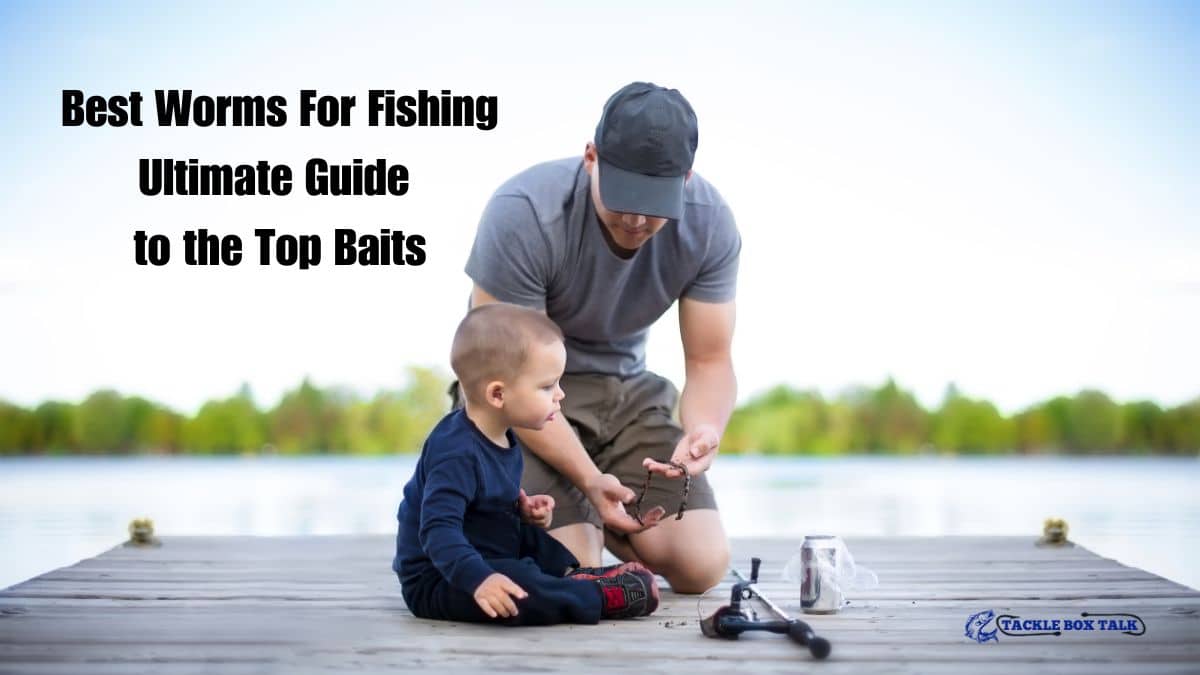
Cory Haasnoot
Cory is a content writer-editor and founder of Tackle Box Talk. Favorite Quote: "Give a man a fish, and you feed him for a day. Teach a man to fish, and you feed him for a lifetime."